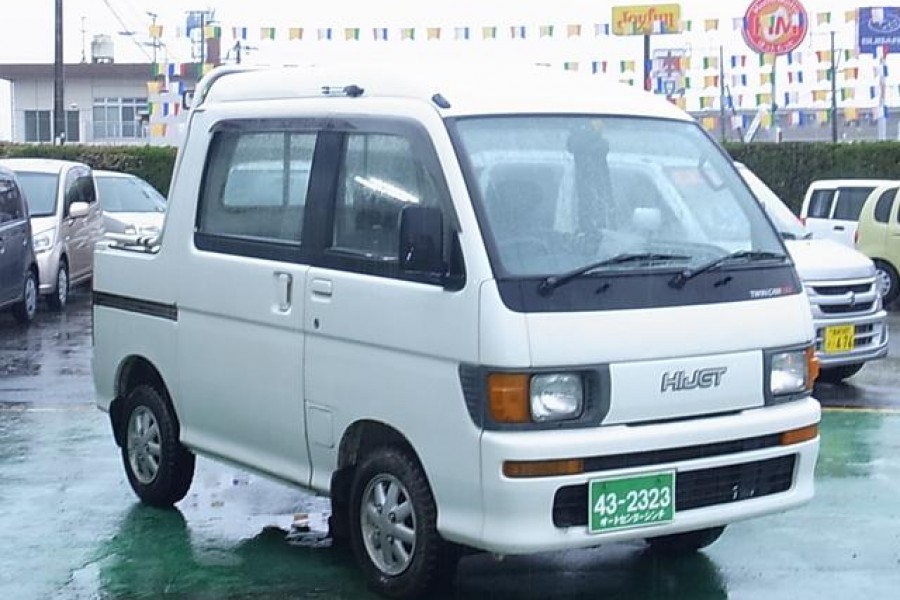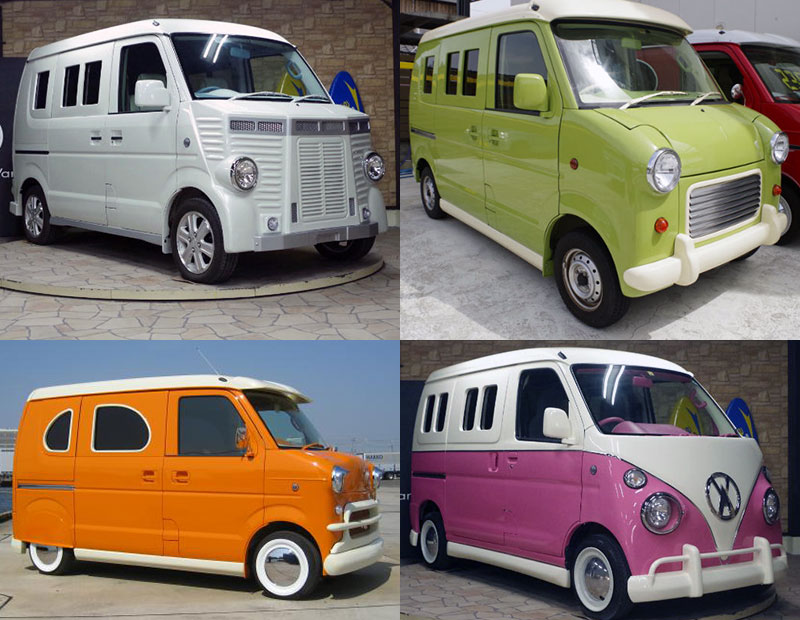Tiny Trucks and vans are growing in popularity. Many brands are available on the market, including the Subaru Sambar, Nissan Pao, and Mitsubishi Minicab. But what makes these brands a tiny truck and van? Is it just the size or is there something more to the overall design and aesthetics which defines the vehicle? If you want to know more about tiny Japanese trucks and vans, read on.

What is a Tiny Truck or Van?
When you think of a tiny truck or van, you may think that it is just a small vehicle. This would be right. But it is more than just the size. Tiny trucks and vans are referred to as Kei vans or trucks. The reason for this is that they must adhere to the Japanese standards of the Kei in order to be tiny. These standards regulate the overall size of the power that the van or truck can have. Currently, the standard for the length is 11.2 ft, the height is 6.6ft and the overall width is 4.9 ft. As you can see, this is substantially different from a full-size truck or van.
Power limitations for a tiny truck or van are limited to 660cc engine displacement. The fastest that a Kei is allowed in the current generation is 84mph. That competes with many full-size vehicles on the market. However, this is not the norm. Most Kei trucks and vans can reach a speed of around 45 to 50mph. While this is a lower speed than some other vehicles, it suffices to navigate most roadways. As Japanese tiny trucks and vans are not intended for highway or interstate use, this regulation ensures an eco-friendliness and functionality not common in other types of automobiles.
Are Tiny Japanese Trucks and Vans new?
No. Japanese tiny trucks and vans have been around since the 1940s. Most of the major brands on the market have had a mini truck or van at some point. In Japan, the truck has been around since introducing the motorized vehicle. This is because of the mentality of how vehicles are made in Japan. While there are a few which are designed for aesthetic purposes, most of the vehicles produced are for functionality. They should get the driver from point A to point B. Alot of the extras are stripped away. This has been the case for Japanese cars for generations.
Though the tiny Japanese Trucks and Vans are not new, it does not mean that there are not new vehicles being added to the market. As the standards for Kei trucks and vans change every so often, the market changes as well. Some tiny vans and trucks have seen over ten generations of developments. Usually, these developments include upgrades to the engine, an increase in the cabin height, changing the engine placement, etc. When looking for your tiny Japanese truck or van, compare the features of the generations offered to find the best fit for your needs.
Are tiny trucks and vans safe?
Yes. There is a misconception that just because the trucks are small, that they are not safe to drive. YouTube and other media have shown a few instances where there has been tipping of the vehicle. What these videos do not explain is that the vehicle was not being used properly and that the weight of the vehicle was not distributed as it should be. As with any vehicle, large or tiny, if you drive it with the weight shifted to the front, it will make it more prone to front tipping. If you take a curb too fast, it is liable to tilt. Such are the things that you will see propagated on these channels.
Tiny trucks and vans are very safe. A low distance to the ground makes for easy navigation without the wind resistance that you get from other full-sized vehicles. The stripped-down cabins make it to where the driver can focus on the road without distractions. The bed of the truck is large enough for most uses, but it is small enough not to be cumbersome for the driver. Tiny trucks and vans can have additional packages, like full-sized trucks and vans, to further increase safety. Such features could include side collision, back up notifications, and LED lighting.

How much space is in a tiny truck or van?
A tiny truck of van is not limited in the way most people think. The truck can house two passengers, a standard in most small to mid-sized trucks. Seats can recline, and the top of the cabin allows for taller individuals to sit comfortably. Vans typically allow for 4 to 6 passenger seating, depending upon how the van’s layout is arranged. The major difference in the space is that the extra space has been eliminated. This may cause for a smaller foot space in the van, so check to see how the overall design has been designed prior to purchasing.
Vans may also be designed as tiny campers. This would mean that you have 4 seats (two in the cabin and two in the back of the van) with the remaining space for the camper. Tiny vans have access from two sliding doors and the back hatch.
Where can you use your tiny truck or van?
Because the regulations in Japan differ from the United States, there are limitations to where you can drive a Kei truck or van. Most states allow for off-road use of the tiny truck or van. Other states require that you make the van or truck up to the driving standards of a standard vehicle. In all instances, there are placed within each state that you can drive. It is important that you check with the state you wish to have your vehicle imported to.
For the best results, choose a vehicle which is 25 years old or older. This will allow you to claim a classic car status and have the vehicle on-road in most states.
